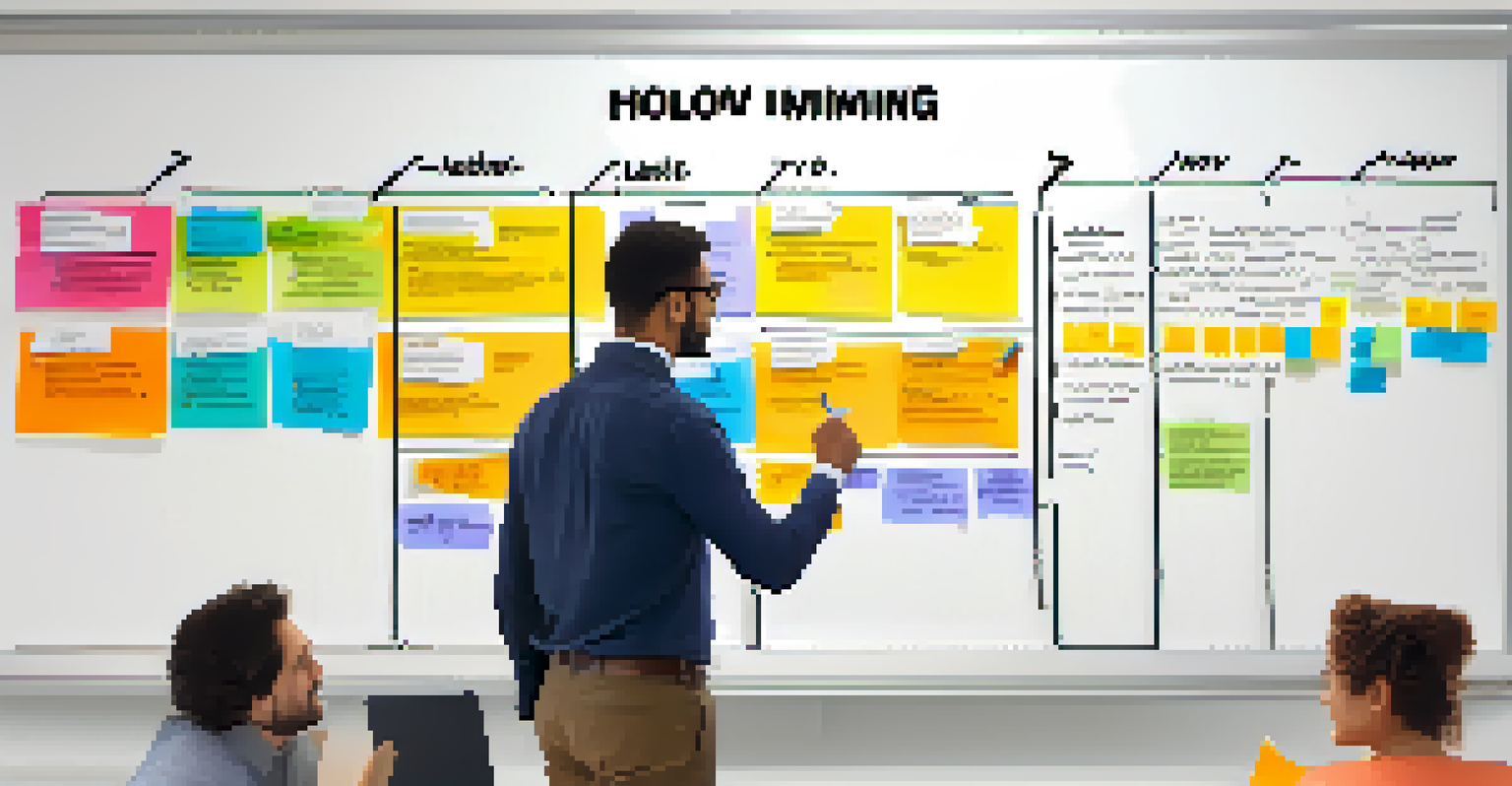The Role of Follow-Up Emails After Interviews

Understanding the Purpose of Follow-Up Emails
Follow-up emails serve a crucial role after an interview. They allow you to express gratitude and reinforce your interest in the position. This simple act can set you apart from other candidates who may neglect this step.
Success is where preparation and opportunity meet.
Think of a follow-up email as a second chance to make a lasting impression. It’s an opportunity to showcase your personality and reiterate your suitability for the role. Plus, it shows your potential employer that you value their time and effort.
Ultimately, a well-crafted follow-up email can help maintain the momentum from your interview. It keeps you fresh in the interviewer's mind as they make their decision, potentially tipping the scales in your favor.
Crafting an Effective Follow-Up Email
When crafting your follow-up email, start by addressing the interviewer by name. This personal touch shows that you remember the details of your conversation and appreciate their effort. A simple greeting like 'Dear [Interviewer's Name]' can go a long way.

Next, express your gratitude for the opportunity to interview. Mention something specific from your discussion to highlight your engagement. For example, 'I enjoyed our discussion about the team's innovative projects,' reinforces your interest while also reminding them of your conversation.
Importance of Follow-Up Emails
Follow-up emails are essential for expressing gratitude and reinforcing your interest in a position after an interview.
Finally, be concise and clear about your enthusiasm for the position. Conclude with a polite offer to provide any additional information if needed. This approach keeps the email professional yet warm, creating a positive impression.
Timing Your Follow-Up Email
Timing is everything when it comes to follow-up emails. Ideally, you should send your email within 24 to 48 hours after the interview. This timeframe keeps the conversation fresh and shows that you are proactive.
It's not what you know, but who you know that makes the difference.
However, if you know the hiring process will take longer, don’t hesitate to wait a little longer—just make sure you don’t miss the window. A follow-up email sent too late can feel less relevant and may not have the desired impact.
Consider also the company's culture. If they have a fast-paced environment, lean towards sending your follow-up sooner. Conversely, if they seem more laid-back, you might have a bit more time to craft the perfect message.
Common Mistakes to Avoid in Follow-Up Emails
While follow-up emails are essential, there are pitfalls to avoid. One common mistake is being overly casual in your tone. Remember, this is a professional communication, so maintain a respectful and formal tone throughout your email.
Another misstep is failing to proofread. Typos and grammatical errors can undermine your professionalism. Always take a moment to review your email before hitting send—consider reading it out loud to catch any awkward phrasing.
Timing Your Follow-Up Matters
Sending your follow-up email within 24 to 48 hours keeps the conversation fresh and demonstrates your proactive approach.
Lastly, avoid being pushy or impatient. While it’s natural to want to know the outcome, your follow-up should not pressure the interviewer for a decision. Instead, focus on expressing gratitude and reinforcing your interest.
Using Follow-Up Emails to Strengthen Connections
Follow-up emails can also serve as a tool to build relationships. By referencing personal connections made during the interview, such as shared interests or experiences, you can create a more memorable rapport.
For instance, if you discussed a recent conference or a book, mention it in your follow-up. This not only shows that you were engaged but also opens the door for future conversations. Building these connections can be beneficial for networking down the line.
Remember, hiring managers aren’t just looking for the best skills; they’re also searching for someone who fits well within the team. A thoughtful follow-up can showcase your personality, making you a more appealing candidate.
Follow-Up Emails and the Hiring Process
Understanding the hiring process is key to timing your follow-up emails. Some companies may have a structured timeline for decisions, while others may take longer due to various factors. Knowing this can help you manage your follow-up strategy effectively.
If you were informed about the timeline during the interview, use that as a guideline for your follow-up. If they mentioned a week for decisions, it’s appropriate to follow up shortly after that timeframe has passed.
Avoid Common Follow-Up Mistakes
Maintaining a professional tone and proofreading your email can prevent common pitfalls that undermine your candidacy.
If you haven't heard back after your follow-up, it’s acceptable to reach out again. Just ensure that your tone remains positive and patient, as this reflects well on your character and professionalism.
The Impact of Follow-Up Emails on Your Career
The impact of follow-up emails extends beyond just one interview. Establishing a habit of sending thoughtful follow-ups can enhance your overall professional reputation. It demonstrates your communication skills and attention to detail, qualities valued in any workplace.
Moreover, following up can lead to future opportunities, even if you don’t get the job you interviewed for. A positive impression can keep you in the hiring manager's mind for future openings, or even referrals to other companies.

In short, follow-up emails are a small yet significant part of your job search strategy. They can open doors and create pathways for new opportunities, making them an essential tool in your professional toolkit.